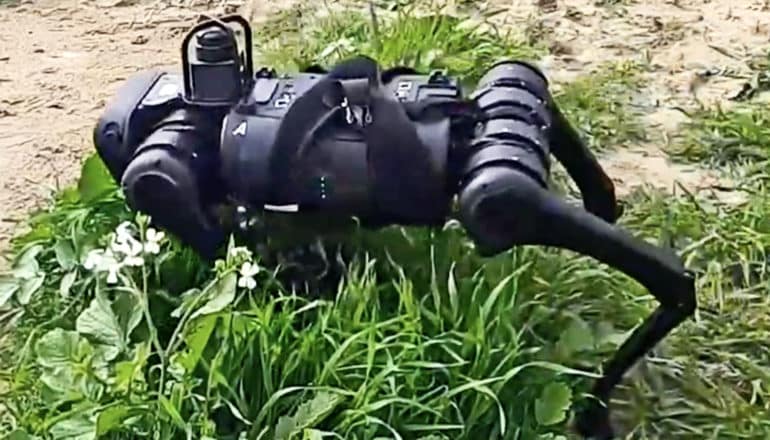
Artificial intelligence has done more than teach a robot to walk. It taught a robot to learn to walk, researchers report.
The distinction is key. A major hurdle to deploying legged robots, whether with two, four, or even more legs, is figuring out how the robot will respond to changing conditions. Humans can adapt as they walk over rocks, mud, sand, slippery ice, and uneven surfaces. They adjust to carrying a heavy backpack or limp along with an injured ankle.
Legged robots cannot adjust so quickly. Most legged robots must be hand-coded for their environments. A crack in a sidewalk or a patch of oil can stop a robot in its tracks or cause it to come tumbling down.
“The focus is not walking. It is learning.”
Rapid Motor Adaptation (RMA) seeks to change that. The artificial intelligence was jointly developed by Deepak Pathak and Zipeng Fu at Carnegie Mellon University’s School of Computer Science and Ashish Kumar and Jitendra Malik at the University of California, Berkeley AI Research.
It enables legged robots to adapt intelligently in real time to challenging, unfamiliar new terrain and circumstances.
“The focus is not walking. It is learning,” says Pathak, an assistant professor in the Robotics Institute. “By falling thousands of times or millions of times in simulation, it learns to walk from scratch and adapts to the ever-changing real world. Since the algorithm’s focus is learning, it is applicable to any kind of robot, not just this one.”
RMA is the first entirely learning-based system that does not rely on any hand-coded motions. and allows legged robots to adapt to their environment by exploring and interacting with the world.
Testing showed that robots with RMA outperformed competing systems when walking over varied surfaces, slopes, and obstacles, and when carrying different payloads.
“If you pick up a backpack, you adjust your motion without knowing the exact weight. If the terrain beneath your feet changes, you adjust your balance to compensate. RMA does this by adapting the robot joints in real-time,” says Kumar, a PhD student.
The technology isn’t limited to robotics. RMA is a step toward building AI systems that can learn in real time to adapt to changing and challenging conditions. The team will present their research at Robotics: Science and Systems.
Additional researchers from Facebook AI, Carnegie Mellon, and UC Berkeley contributed to the work.
Source: Carnegie Mellon University
The post AI teaches a robot how to learn to walk appeared first on Futurity.
from Futurity https://ift.tt/3ic7lL6
No comments:
Post a Comment